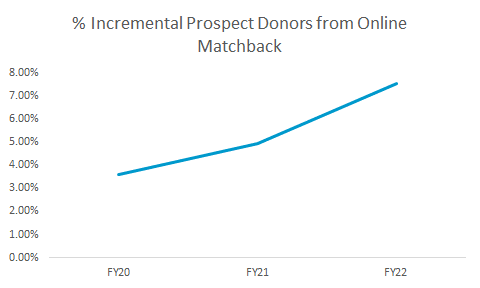
What Makes a Donor Decide “Today Is the Day to Give”?

We are all omni-channel consumers.
If you’re like me, this fall your mailbox was flooded with holiday catalogs from the world’s largest retailers. I was reminded that the commercial world has long known that the marketing and sales media we consume do not always align with our purchasing behavior. Still, while fewer and fewer people actually order through the mail, they are using those catalogs to browse the latest clothes, toys, and tech gadgets.
Consider the typical holiday shopper, looking for the perfect holiday gift:
- They see it in a direct mail catalog.
- Then, they search for it online.
- Then, they compare features and prices. (Perhaps from a variety of retailers!)
- Then, after all that consideration, they purchase.
- Or they may even go to the physical store to purchase it in person.
Our consumer behaviors, purchasing goods and services, are no different from our donor behaviors, giving to charities.
Direct Mail, Alive and Well
My friends who think DM is dead are always amazed when I tell them that donors will respond to a piece of mail that is several years old. Mail has staying power. A very physical, tactile, powerful reminder of organizational mission and donor impact.
Case in point: Recently, we were revisiting results from a Q4 2019 mailing — a three-year-old campaign — because test results today seemed strange. A little sleuthing found that a $5,000 gift was returned to the test package in April 2021 — 18 months after the mailing was in-home!
It is certainly possible that the donor stumbled across the paper remit while they were cleaning and decided today was the day. It’s also possible that other touchpoints over the course of 18 months — display ads, social media, commercials, even another direct mail piece — put that organization back into their mind. While we cannot know all the exact factors that led up to when they found that piece of mail, something primed them for giving at that point in time.
Spill-in Revenue Sometimes Offers a Clue
One might be tempted to say this is anecdotal, but we see it constantly. Recently, I was reviewing spill-in revenue data (donations that arrive in a fiscal year that were driven by marketing investments and activities in prior fiscal years) for a large nonprofit. I found over $9,000 in revenue from mailings over two years ago. In fact, some of those gifts were from 2018 campaigns!
This is not an anomaly, and I would wager that if you examined some old direct mail campaigns, you would find this is the norm for your program, as well.
DM Acquisition Driving Online Gifts
Of course, it’s just as possible that a donor stumbles across the 3-year-old direct mail piece, searches the organization online, clicks to the website, and donates. The difficulty in knowing this for sure is that online giving is not easily attributable back to direct mail. Gift attribution is notoriously difficult, and becoming more so, and digital privacy changes are making it even more challenging.
However, we are seeing more and more revenue coming from acquisition direct mail to online forms using a 30-day attribution window between mail date and donation receipt.
In fact, one client’s recent prospect match-back saw an increase of 114% over a three-year period of time.

The Role of Social Media
Donors are interacting with digital media in new and different ways every day. For instance, giving that is directly attributable to social media is shrinking, and is looking more and more like that of display advertising. But does that mean social media isn’t influencing donor behavior? Search “TikTok made me buy it” and you will immediately know the answer to that question.
Where Traditional Segmentation Breaks Down
In the nonprofit space, we tend to bucket donors by their giving history, perhaps in the spirit of cost savings and efficiency, and use that segmentation to determine the marketing touches those donors should receive. For example, Donor A only gives online, so she only receives online touches. While Donor B gives only through DM, so she receives only DM touches.
The problem with this practice is that these donors’ transactional histories do not necessarily reflect what influenced their decisions to give.
That’s why we are increasingly relying on our model built on Artificial Intelligence to predict giving behaviors. This model, called GPS (Giving Potential Scores), scores donors on over a hundred behavioral traits and takes into account channel activity beyond simply where the gifts came from. It then predicts the likelihood of individual giving behaviors based on those channel activities (and many other factors).
We Are All Omni-Channel Consumers … and Donors
It’s time we learned from our commercial friends that, while a donor may write a check to donate, they are still consuming media across a wide variety of other media. Conversely, while a donor may go online to give, that doesn’t mean that a direct mail piece isn’t influencing that decision. A donor can decide “today’s the day!” due to any number of influences.
In short, we should not conflate channels that deliver information and even influence giving with the channels in which donors prefer to make their giving transaction. All channels are critical in charitable persuasion.
Concerned about keeping your costs in check while still being omni-channel? Contact us to learn more about TrueSense’s GPS modeling, which targets donors when they are ready to give, rather than bucketing donors by their transaction channel.
